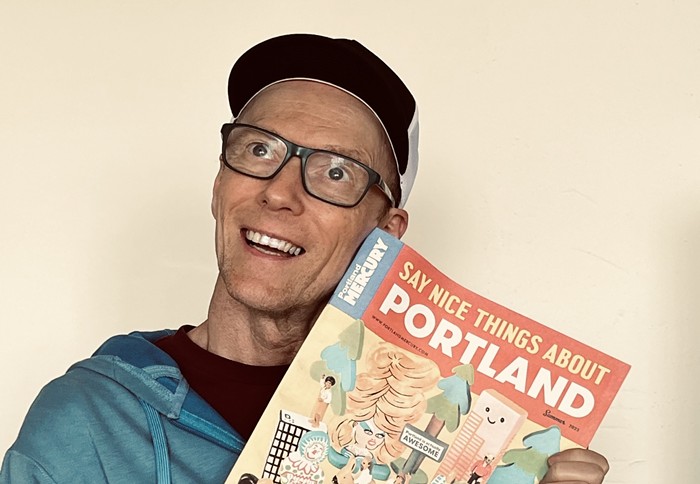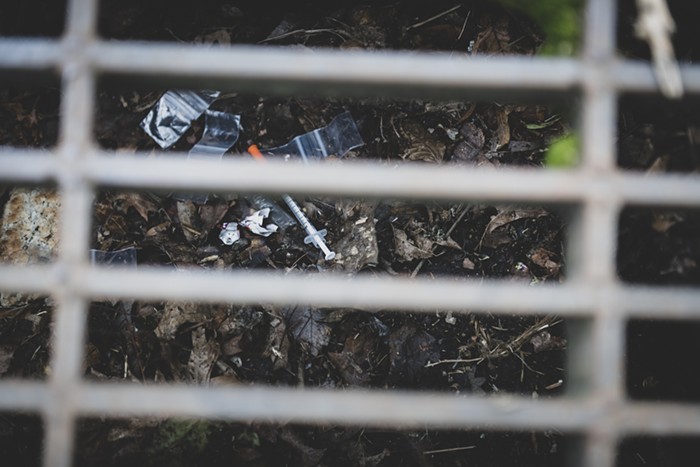THE PORTLAND ART MUSEUM (PAM) was established in 1892, making it one of the oldest public art institutions in the country. But it might also be one of the most progressive—at least according to Jen Delos Reyes, a recent artist-in-residence at PAM, a professor in Portland State University's Art and Social practice MFA program, and a driving force behind the museum's popular—and populist—Shine a Light event.
AGENDA: Tell me about being an artist-in-residence at the Portland Art Museum.
JEN DELOS REYES: One of the biggest projects I worked on during that year was called A History of Engagement. It ended up being a book that unfolds to over 75 feet in length. It was a collaboration with Sarah Lampen, who was their Kress Fellow, and illustrator/designer Olivia Serrill. Sarah had been doing this incredible research, finding all of these quirky facts about the museum's history of public engagement programming... It read like contemporary artists' projects.
But dating from the early 1900s?
That was the start of it. In the '30s they had this director, Robert Tyler Davis, who brought a real openness to the institution. There was this one particular story in which they had an exhibition by [painter Joan] Miró, and someone remarked, "My kid could do that."
Of course.
In response to that comment, he set up a maker's station in the gallery with paint and paper, and invited people to try.
And there's all these Miró paintings on the wall, around it?
Yeah. Which is insane. Stories like that were really inspiring. In the '70s they had a "Take Down Hoedown"—instead of having an opening event, they had this big closing party in which people were invited to come to the museum wearing country fare, blue jeans, overalls, whatever, and they de-installed the show together, which was a show of masterworks of wood sculptures from the 20th century. Hearing about that made me think of this contemporary art project that Thomas Hirschhorn did called the "Precarious Museum"; he trained people and community members to essentially become preparators, to handle works of art within the institution.
What are you working on right now?
One of the things I do is organize an international conference called Open Engagement. It started in Canada in 2007. It's become a very important site, in terms of bringing together international artists who are reflecting on what it means to have socially engaged art practices; who are thinking, "What can art do in our world? How can it respond to and address some of the most challenging struggles of our time?"
That's a heavy way to put it, but I think artists who are drawn to working in this way feel urgency. That can mean different things: Environmental issues are obviously a big concern, the prison industrial complex, issues around equality, and social justice in general. Also, there are a lot of convivial and social projects that may seem frivolous, but are still exploring what it means to be connected to one another, and that's a pretty pressing matter, too: understanding and empathizing.
I'm also writing a book. The book will focus on five artists who are working today, in a series of in-depth interviews that explore their daily lives. [The book] will seek to elevate how they live on a day-to-day basis to be as monumental as some of these larger projects that we talk about in art history, acknowledging the fact that these are people who live with such integrity and such purpose that you can't see a distinction between their practice and how they're living their lives. Some of the artists I'm looking at are people like Fritz Haeg from LA, Mierle Laderman Ukeles—who's been the New York City Department of Sanitation's unsalaried artist-in-residence for the past 40 years—and others.
epartment of Sanitation's unsalaried artist-in-residence for the past 40 years—and others.
The book is called I'm Going to Live the Life I Sing About in My Song. I was the artist-in-residence at the Hyde Park Art Center in Chicago. When asked by the residency coordinator, "If you could do anything, what would you do?" My honest answer was, "I just wanna live." I'd struggled to describe to people what I meant when I said that, and then I thought about that Mahalia Jackson song, which is the title of the book, "I'm Going to Live the Life I Sing About in My Song," where she sings about being a gospel singer and that, if you're going to be in church on Sunday, and you're going to sing these words, you really have to live a life that's worth that.
When will the book be released?
I'm working on the interviews over the summer. There's no rush. I don't have a publisher. It's really important to me that I'm doing this independently, so that I'm able to have full control and no expectations. I have a small grant from RACC [Regional Arts and Culture Council], and then I'll be pushing forward some fundraising efforts later this summer. Maybe in a year? So many of my projects involve working with teams and people who are assembled for each project. I kind of attribute that to my formative time in Winnipeg, in the early '90s, being part of the independent music scene. I played in bands; I was a show organizer, published zines. Very much in that Riot Grrrl vein, and that continues on, in this desire to organize and to collaborate.













